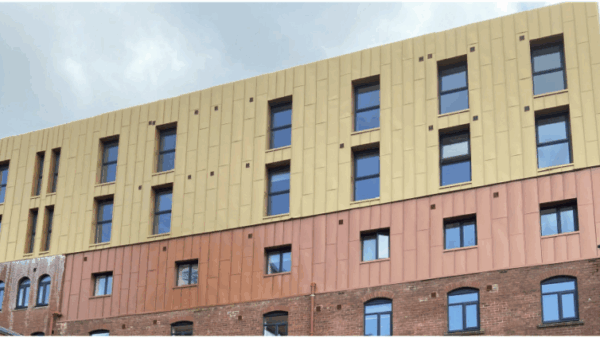
Researchers at Swansea University will work with Tata Steel UK to develop solar panels that can be printed onto buildings.
Whereas traditional solar cells are manufactured from silicon and require a lot of energy to produce, a new type of cell called a perovskite solar cell (PSC) is cheaper and lighter. It can be made locally using widely available materials and manufacturing them uses less than half the carbon compared with a silicon cell, according to the university.
PSCs are also flexible rather than rigid, which means they can be printed, using techniques such as screen printing, directly onto materials such as coated steel.
The university added that the process opened the door to creating innovative steel products for use in construction that have in-built solar-generating capabilities.
Three-year collaboration
Swansea University and Tata Steel have signed a memorandum of understanding, launching a three-year research collaboration.
Swansea University will contribute expertise in manufacturing the printable cells, led by the SPECIFIC Innovation Centre. Tata Steel brings in its expertise in coatings on steel, screen printing and supply chains for materials.
“These printable solar cells can be built into the fabric of our homes, shops and offices, allowing them to generate the power they need, and more besides.”
The project is called STRIPS/Tata Steel Industrial Acceleration.
Professor Dave Worsley, head of materials science and engineering at Swansea University, said: “This technology will help us tackle the energy crisis and the climate crisis at the same time.
“The future is about solar energy technology being built in, not added on afterwards. These printable solar cells can be built into the fabric of our homes, shops and offices, allowing them to generate the power they need, and more besides.
“We know the concept works as we’ve demonstrated it in our Active Buildings in sunny Swansea. This new collaboration with Tata Steel will enable us to develop its potential more quickly, identifying new types of steel products that actively work to generate electricity.”
Sumitesh Das, Tata Steel UK’s R&D director, said: “We are buoyant with the possibilities that the perovskite technology brings to the table – especially in integration to the building and construction solutions – across different value streams in Tata Steel.
“The combination of a ‘green’ solar technology with steel is a significant step in our net-zero ambitions. We are excited by the positive effect such solutions can have on some of the poorest communities, who, through such technologies, could be taken out of fuel poverty.”
Comments
Comments are closed.












This is very interesting research and I am sure our ECA members would be keen to be involved and to know more.
I have been preaching recently that INSTALLATION OF PV & BATTERY STORAGE IS NOW EXTREMELY VIABLE FOR HOUSEHOLDS. Due to the cost of energy the avg house will cover cost of installation within 6 years . And it will add value to the property so basically pays for itself . All new houses should have a degree of PV & storage fitted as standard this would aid the NET ZERO TARGETS .